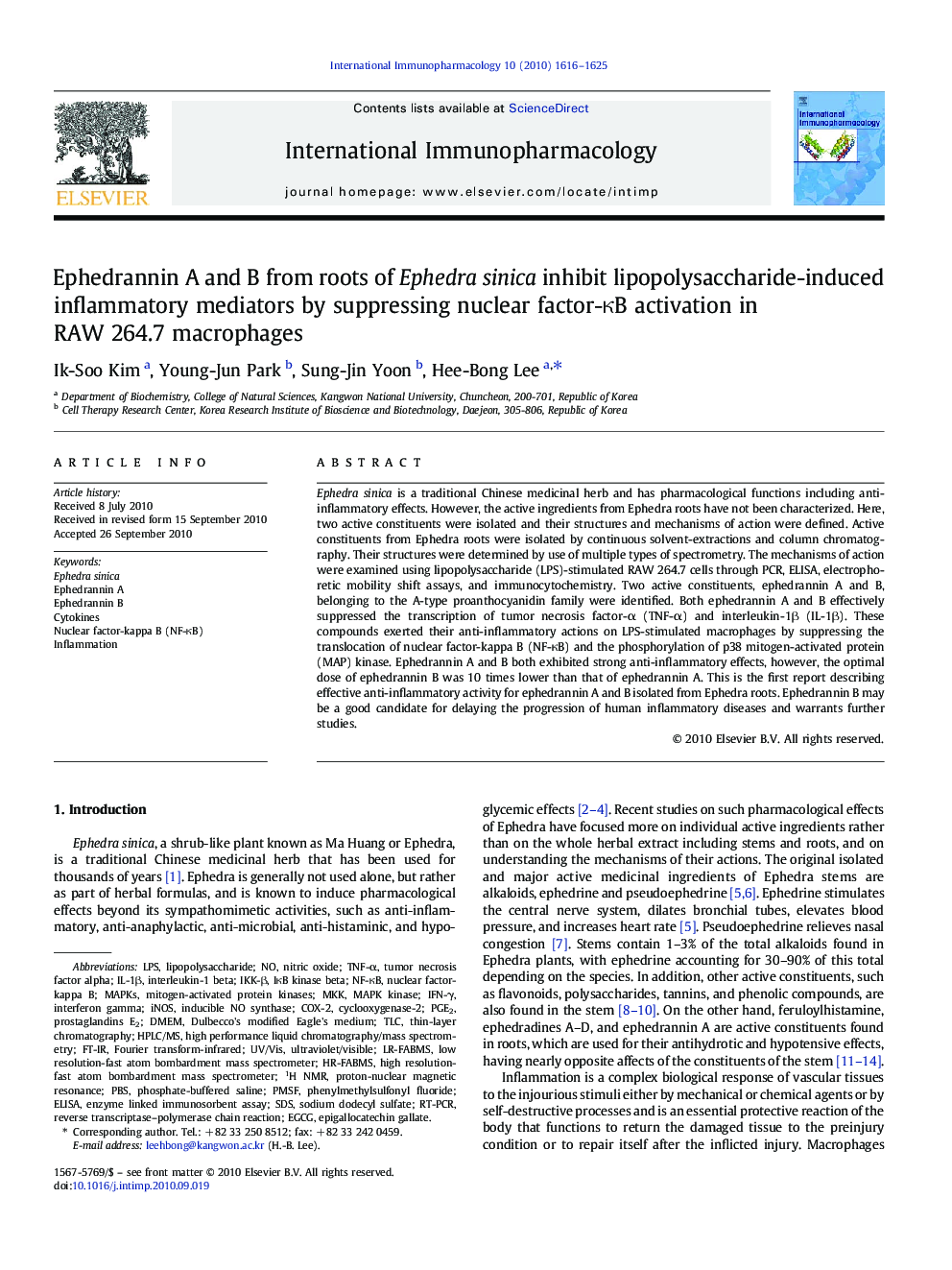| Article ID | Journal | Published Year | Pages | File Type |
|---|---|---|---|---|
| 2541398 | International Immunopharmacology | 2010 | 10 Pages |
Ephedra sinica is a traditional Chinese medicinal herb and has pharmacological functions including anti-inflammatory effects. However, the active ingredients from Ephedra roots have not been characterized. Here, two active constituents were isolated and their structures and mechanisms of action were defined. Active constituents from Ephedra roots were isolated by continuous solvent-extractions and column chromatography. Their structures were determined by use of multiple types of spectrometry. The mechanisms of action were examined using lipopolysaccharide (LPS)-stimulated RAW 264.7 cells through PCR, ELISA, electrophoretic mobility shift assays, and immunocytochemistry. Two active constituents, ephedrannin A and B, belonging to the A-type proanthocyanidin family were identified. Both ephedrannin A and B effectively suppressed the transcription of tumor necrosis factor-α (TNF-α) and interleukin-1β (IL-1β). These compounds exerted their anti-inflammatory actions on LPS-stimulated macrophages by suppressing the translocation of nuclear factor-kappa B (NF-κB) and the phosphorylation of p38 mitogen-activated protein (MAP) kinase. Ephedrannin A and B both exhibited strong anti-inflammatory effects, however, the optimal dose of ephedrannin B was 10 times lower than that of ephedrannin A. This is the first report describing effective anti-inflammatory activity for ephedrannin A and B isolated from Ephedra roots. Ephedrannin B may be a good candidate for delaying the progression of human inflammatory diseases and warrants further studies.
Graphical abstractFigure optionsDownload full-size imageDownload as PowerPoint slideResearch Highlights►Two anti-inflammatory constituents were isolated from roots of Ephedra sinica. ►Two active constituents from their determined structures were ephedrannin A and B. ►Both ephedrannin A and B suppressed the transcription of iNOS, TNF-α, and IL-1β. ►Both of them suppressed NF-κB and p38 MAP kinase.
